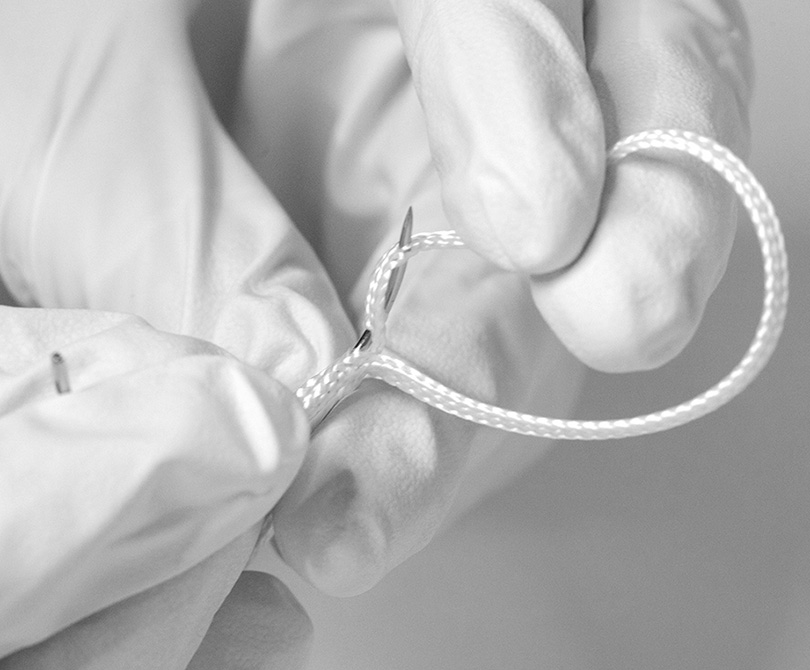
For sports injuries ranging from ligament and tendon tears to bone grafts to spinal stabilization, biomedical textiles are now frequently part of less invasive and more innovative surgical procedures.
![]()
Biomedical Textiles for Sports Medicine Devices
For sports injuries ranging from ligament and tendon tears to bone grafts to spinal stabilization, biomedical textiles are now frequently part of less invasive and more innovative surgical procedures.
![]()
Patients being treated for sports injuries are often young and enjoy engaging in physical activities, so when treating them it is a high priority to restore and preserve their range of motion and natural movement. Because biomedical textiles are inherently compressible and flexible, they are excellent for less invasive delivery applications that benefit from shape transformation (entering through a small hole and then expanding in the body). They are also highly compatible with biologic structures and can be tailored to the needs of the procedure. This often allows surgeries to be simpler and less invasive.
Biomedical textiles can be used in innovative medical devices for sports medicine procedures including:
- Tendon and ligament repair (especially treatment of Achilles and ACL injuries)
- Acromioclavicular (AC) joint fixation
- Bone anchors
- Shoulder/rotator cuff repair
- Suture reinforcement patches
- Knee ligament repair
- Foot and ankle injury repair
- PCL (posterior cruciate ligament), MCL (medial collateral ligament), LCL (lateral collateral ligament) repair
- Knee meniscus (lateral and medial)
- Articular cartilage replacement
- Ankle/suture-based and extra-cortical fixation buttons
- Injuries of the bicep and quadricep
Biomedical Textiles for Foot and Ankle Applications
One market segment that’s seeing increasing growth is foot and ankle repair. Sports-related accidents are a major contributor to these types of injuries, but diseases such as osteoporosis and arthritis, as well as rising incidences of road accidents are also factors.
Braided and woven textiles that can be made of nonresorbable or resorbable polymers are particularly beneficial in foot and ankle repair applications, especially for ligament and tendon repair. Thanks to their flexibility, high tensile strength, biocompatibility, low profile, and inherent capabilities for promoting tissue ingrowth, textiles can be an excellent choice for inclusion in many surgical applications, including:
- Syndesmosis repair
- Deltoid ligament ankle repair
- Metatarsal ligament repair
- Achilles tendon repair
- Lateral and medial stabilization
- Hallux valgus reconstruction
- Digital tendon transfers
- Mid-foot reconstruction
Woven tapes may offer advantages over braided constructions due to their low permeability and lack of stretch in either direction. Like braids, they can be made from a variety of polymers that are more consistent and predicable than natural fiber, decreasing the chance of an adverse tissue reaction.
Read our foot and ankle repair blog to learn more about these types of applications.
Key benefits of textiles
- Flexible
- Compressible
- Highly customizable fabrications
- Biocompatible
- Low profile
- High tensile strength
- Compliance
- Inherent capabilities for promoting tissue ingrowth
Cortland Biomedical is trusted by leading medical device OEMs to enable greater sports medicine device innovation by designing and engineering braided, woven and knitted biomedical textiles fit-for-purpose.
Cortland has the equipment and expertise – backed by a team excited to go beyond the status quo – to create unique and highly customized fabrications that can make devices more reliable while allowing for less invasive surgical procedures that may help get any athlete – from a little leaguer to a pro – back in the game sooner.
Learn more here.
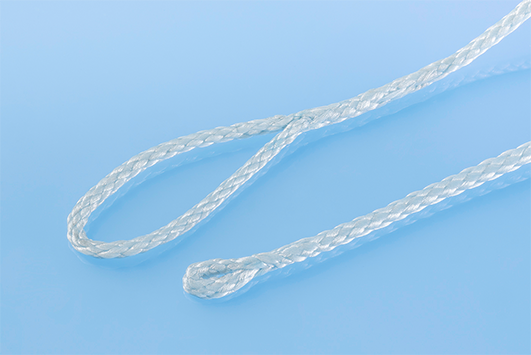
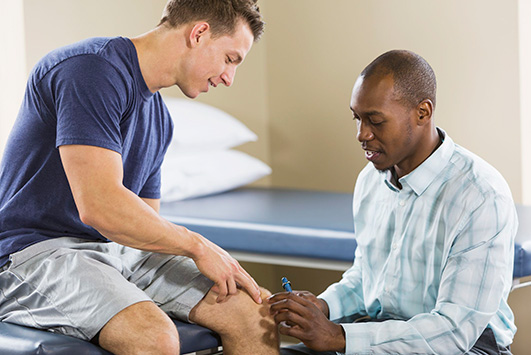
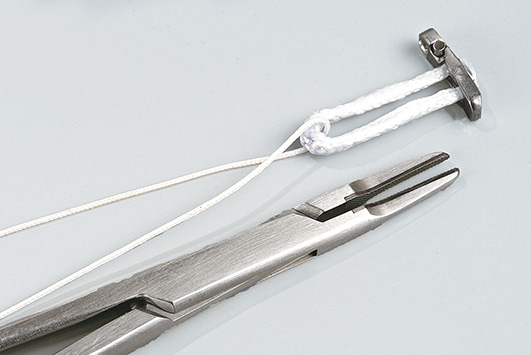
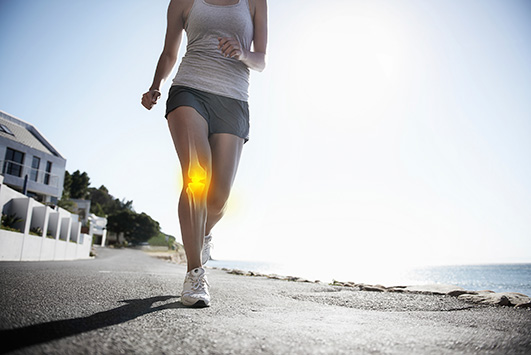
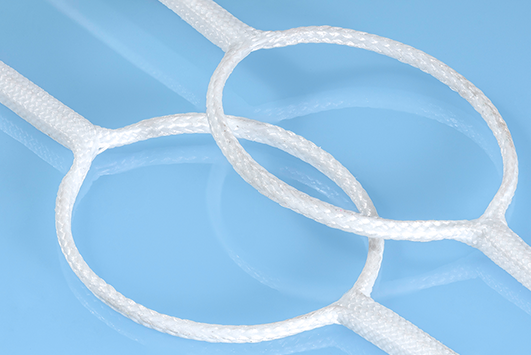
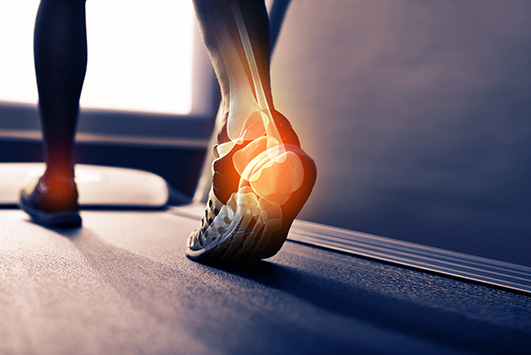
Patients being treated for sports injuries are often young and enjoy engaging in physical activities, so when treating them it is a high priority to restore and preserve their range of motion and natural movement. Because biomedical textiles are inherently compressible and flexible, they are excellent for less invasive delivery applications that benefit from shape transformation (entering through a small hole and then expanding in the body). They are also highly compatible with biologic structures and can be tailored to the needs of the procedure. This often allows surgeries to be simpler and less invasive.
Biomedical textiles can be used in innovative medical devices for sports medicine procedures including:
- Tendon and ligament repair (especially treatment of Achilles and ACL injuries)
- Acromioclavicular (AC) joint fixation
- Bone anchors
- Shoulder/rotator cuff repair
- Suture reinforcement patches
- Knee ligament repair
- Foot and ankle injury repair
- PCL (posterior cruciate ligament), MCL (medial collateral ligament), LCL (lateral collateral ligament) repair
- Knee meniscus (lateral and medial)
- Articular cartilage replacement
- Ankle/suture-based and extra-cortical fixation buttons
- Injuries of the bicep and quadricep
Biomedical Textiles for Foot and Ankle Applications
One market segment that’s seeing increasing growth is foot and ankle repair. Sports-related accidents are a major contributor to these types of injuries, but diseases such as osteoporosis and arthritis, as well as rising incidences of road accidents are also factors.
Braided and woven textiles that can be made of nonresorbable or resorbable polymers are particularly beneficial in foot and ankle repair applications, especially for ligament and tendon repair. Thanks to their flexibility, high tensile strength, biocompatibility, low profile, and inherent capabilities for promoting tissue ingrowth, textiles can be an excellent choice for inclusion in many surgical applications, including:
- Syndesmosis repair
- Deltoid ligament ankle repair
- Metatarsal ligament repair
- Achilles tendon repair
- Lateral and medial stabilization
- Hallux valgus reconstruction
- Digital tendon transfers
- Mid-foot reconstruction
Woven tapes may offer advantages over braided constructions due to their low permeability and lack of stretch in either direction. Like braids, they can be made from a variety of polymers that are more consistent and predicable than natural fiber, decreasing the chance of an adverse tissue reaction.
Read our foot and ankle repair blog to learn more about these types of applications.
Key benefits of textiles
- Flexible
- Compressible
- Highly customizable fabrications
- Biocompatible
- Low profile
- High tensile strength
- Compliance
- Inherent capabilities for promoting tissue ingrowth
Cortland Biomedical is trusted by leading medical device OEMs to enable greater sports medicine device innovation by designing and engineering braided, woven and knitted biomedical textiles fit-for-purpose.
Cortland has the equipment and expertise – backed by a team excited to go beyond the status quo – to create unique and highly customized fabrications that can make devices more reliable while allowing for less invasive surgical procedures that may help get any athlete – from a little leaguer to a pro – back in the game sooner.
Learn more here.






